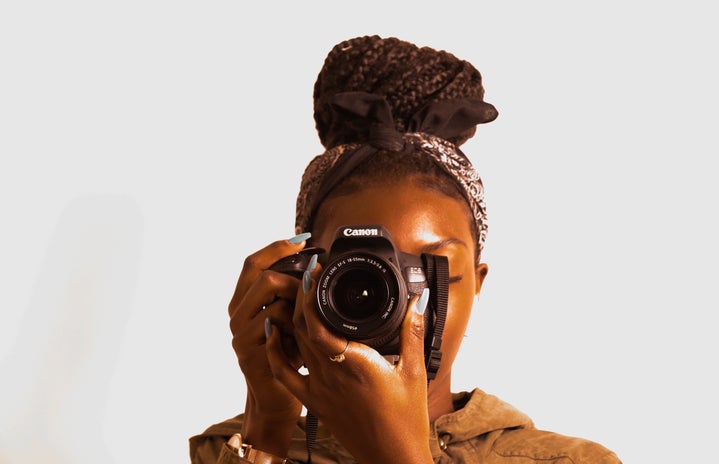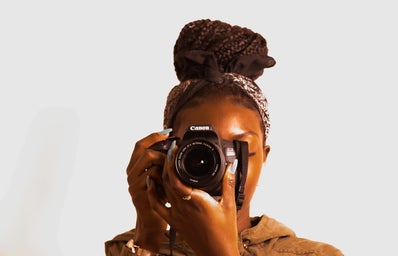The art world has been defined by a lack of women who are given the chance of success. Within photography it is no different, so here are eight women photographers you may not know
Photojournalism and photography are areas strongly marked by the patriarchal views which mold western society. As a journalism student, it struck me that mostly men are studied in photojournalism classes, there being, amongst a sea of men, only one or two women studied in our program. But the issue goes well beyond that, as men are not only the eye behind the cameras but also de mind, that is, the representation of the world is biased by the extremely privileged male experience on earth, as well as by the gaze they tend to lie upon women’s bodies and lives.
Looking to explore a marginalized view in the history of photography, this article brings eight women photographers, who represented themselves, their equals, as well as the whole world around them through the unbiased eyes of the feminine, in an act of liberation and parallax within the way we see the world around us.
- Francesca Woodman
-
Francesca Woodman was an American photographer known for her mysteriously poetic black and white self-portraits. The troubled mind would photograph herself incessantly for a short period of time until committing suicide at the age of 22, a loss still mourned by the artistic society, who would later come to recognize the power of the images portrayed by Woodman. She was born in Denver, in a family of artists who would encourage her into the dangerous life as an artist, a life defined by art but even more by introspection, a habit that would take form in her extensive oeuvre of tender yet haunting portraits.
Want to check out her work? Click here and here!
- Susan Meiselas
-
Baltimore-born photographer Susan Meiselas is nowadays one of the most notorious people in the world of photography. Exploring genres from daily life to revolutions and refugees, Meiselas has won numerous awards for her thorough depiction of those who would not have been seen without the work of her lenses. Member of Magnum Photos since 1976, and President of the Magnum Foundation since 2007, the photographer represents and denounces the lives of those living on the edge: from her first series, Carnival Strippers (1976), to her later work, Room of Their Own (2016), her sensitive yet accusative work has had the power to give a voice to the unheard.
Want to check out her work? Click here and here!
- Diane Arbus
-
Diane Arbus was an American photographer whose oeuvre has come to influence numerous photographers since her untimely suicide, in 1971. Photographing marginalized groups of people throughout New York City, the artist built an archive that would explore the issues of identity and the social construct of normality through the portrayal of the mentally ill, transgender, and queer people, as well as performers, all laying on the brim of society. Alongside her husband, Diane Arbus would become a true legend amongst photographers, having displayed the other side of life in the city as well as right outside it, wandering between society and its fringes.
Want to check out her work? Click here and here!
- Margaret Bourke-White
-
Born in New York in 1904, Margaret Bourke-White was, since the beginning of her career, a pioneer. Catching the attention of the publisher and magnate Henry Luce, she was the first photographer to take pictures of the Soviet Industry, later being recruited by Luce as one of the first four photographers of Life Magazine, the first great means of communication to use most of photojournalism to disseminate information. After earning the first cover of Life Magazine, Bourke-White would also become a correspondent during WWII, trailing her way as one of the most well-known photographers of great events in human history, never leaving aside the beauty of photography as an art form.
Want to check out her work? Click here!
- Sally Mann
-
Exploring themes from family to death, Sally Mann is considered one of the best photographers in the art world. Having a passion for her roots, the American South, as well as antique photography technology, Mann formulated, over the years, a notable style, easy to recognize in any of her photographs. Combining the calmness of family settings and the eerieness of death, explicitly photographed by her in series such as Body Farm and What Remains, Mann’s career rendered a number of fans but also critics, who questioned exactly what she was trying to convey, human morality.
Want to check out her work? Click here and here!
- Vivian Maier
-
“A riddle, wrapped in a mystery, inside an enigma” very much describes the life and photography of Vivian Maier. A nanny who would live her whole life photographing essentially New York City, Maier remained a mystery until 2007, when a locker of her negatives was auctioned, and over 100,000 of her negatives were found. Living all of her life as a very private person, Vivian Maier bounced around the Big Apple during her years as a caregiver, casually reinventing the concept of Street Photography and, years later, finally astonishing the whole world with her simplistic yet beautifully architectured photography.
Want to check out her work? Click here and here!
- Justine Kurland
-
New Yorker Justine Kurland portrays the world, and especially womanhood, in a way no man could ever do, through the serene female gaze. In a mix between utopia and dystopia, Kurland photographs American landscapes and their subjects, the “American dream” and those who live it. Photographing mostly women, or rather teenage girls, she would create a gaze that puts girls as subjects rather than objects, showcasing their private worlds, encompassing both struggles and solace. As described by herself, Kurland’s photography comprises “the spectrum between the perfect and the real,” which such pleasing visuals which would turn her into one of the best photographers of contemporaneity.
Want to check out her work? Click here and here!
- Poochie Collins
-
Beyond the issue of lack of representation of women and by women in the photographic world, there clearly is an imbalance when it comes to ethnicity and race. In history, it is extremely hard to find a single woman photographer of color whose work has been awarded the same prestige as that of white women. Despite that, a number of people are drawn to change this reality nowadays, a reality still way too present in the art world as a whole.
The movement Black Women Photographers aims to promote and encourage inclusive hiring practices, in a way that people of color have the chance to gain the same recognition privileged people do. Only one of those fantastic photographers nowadays is Poochie Collins, a Richmond-based photographer whose focus on portraits and day-to-day photography invites the audience to take a look at the Black community from a different point of view.
Want to check out her work? Click here and here!
———————————————————————
The article above was edited by Carolina Grassmann.
Liked this type of content? Check Her Campus Casper Libero home page for more!



